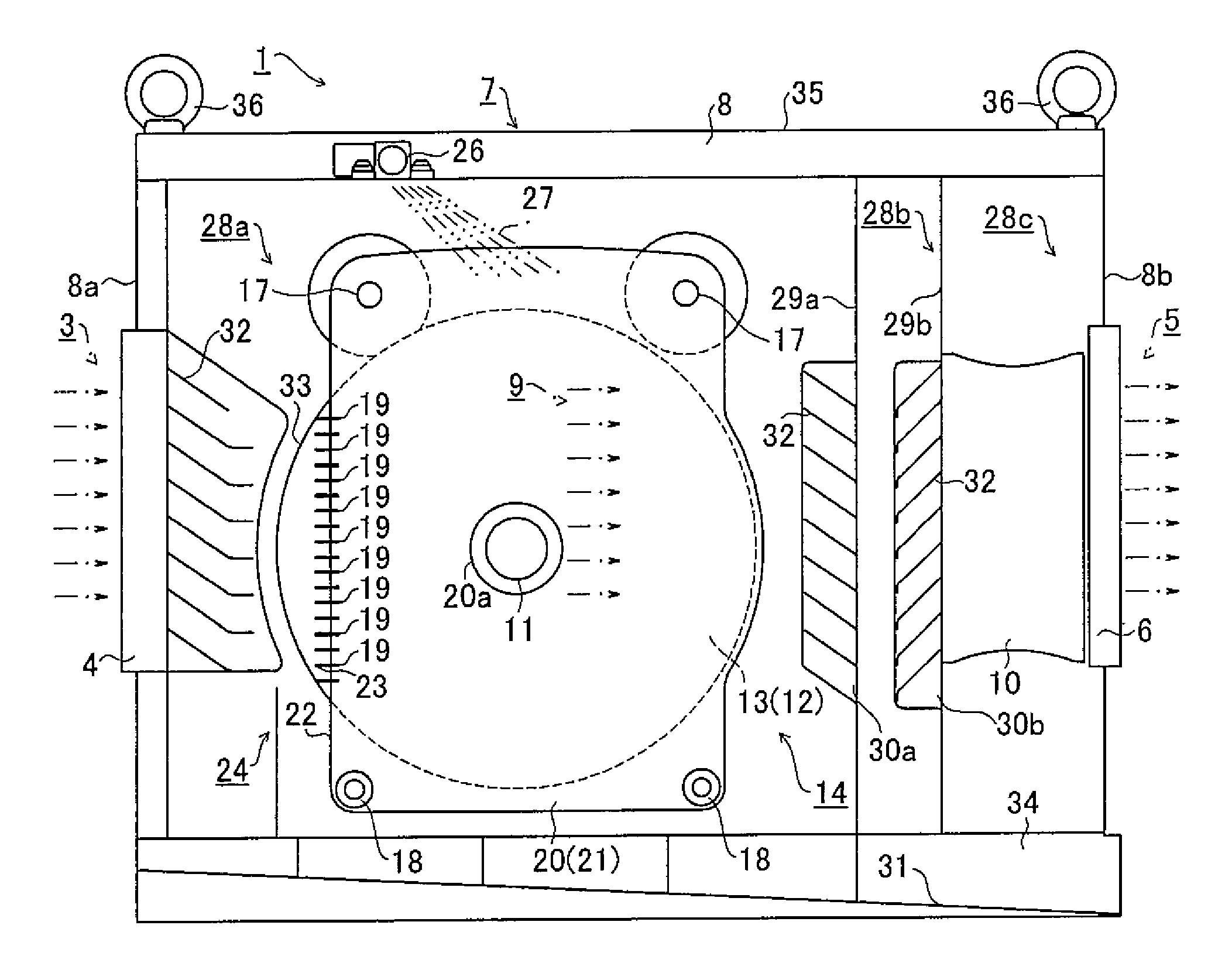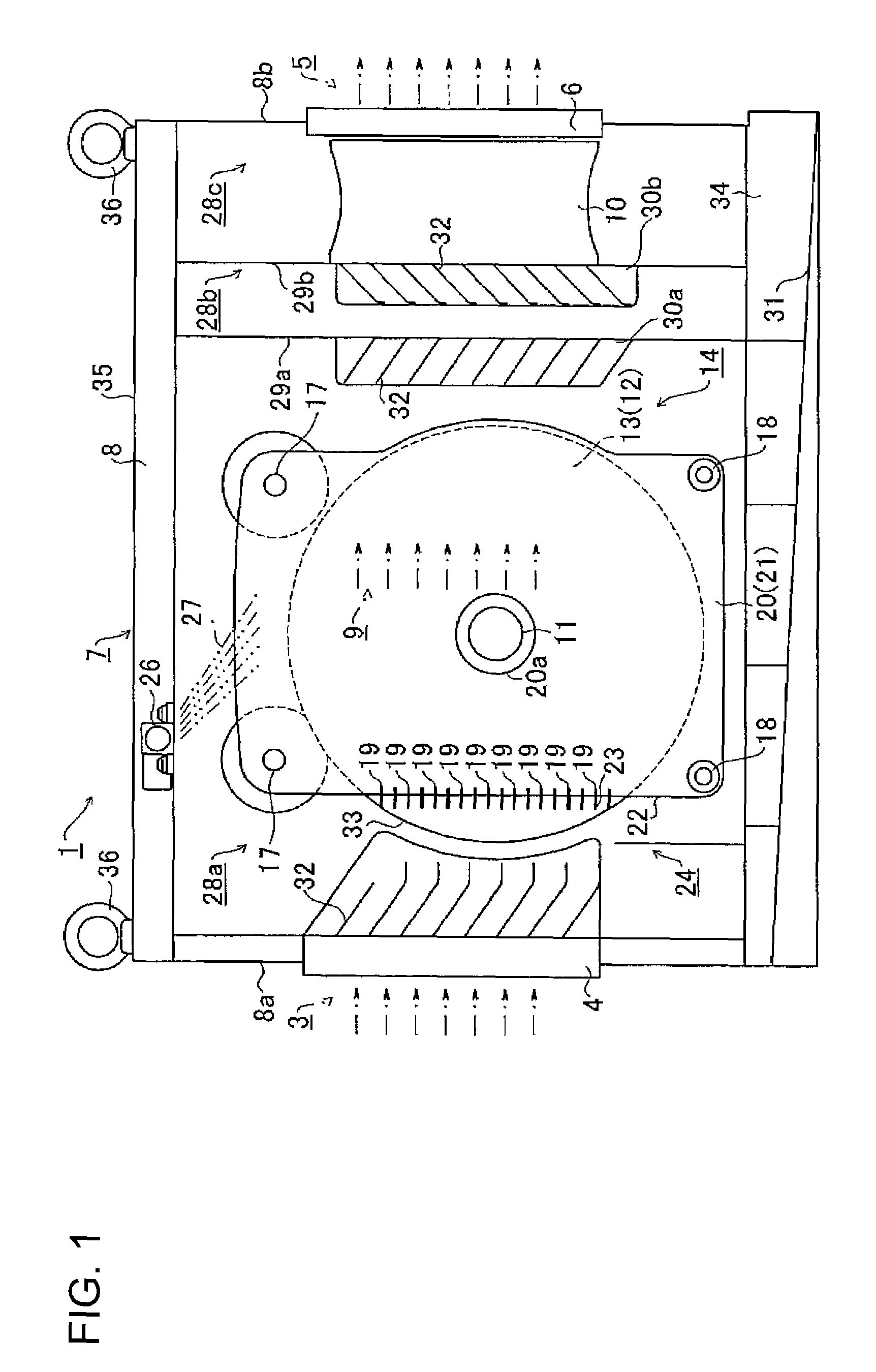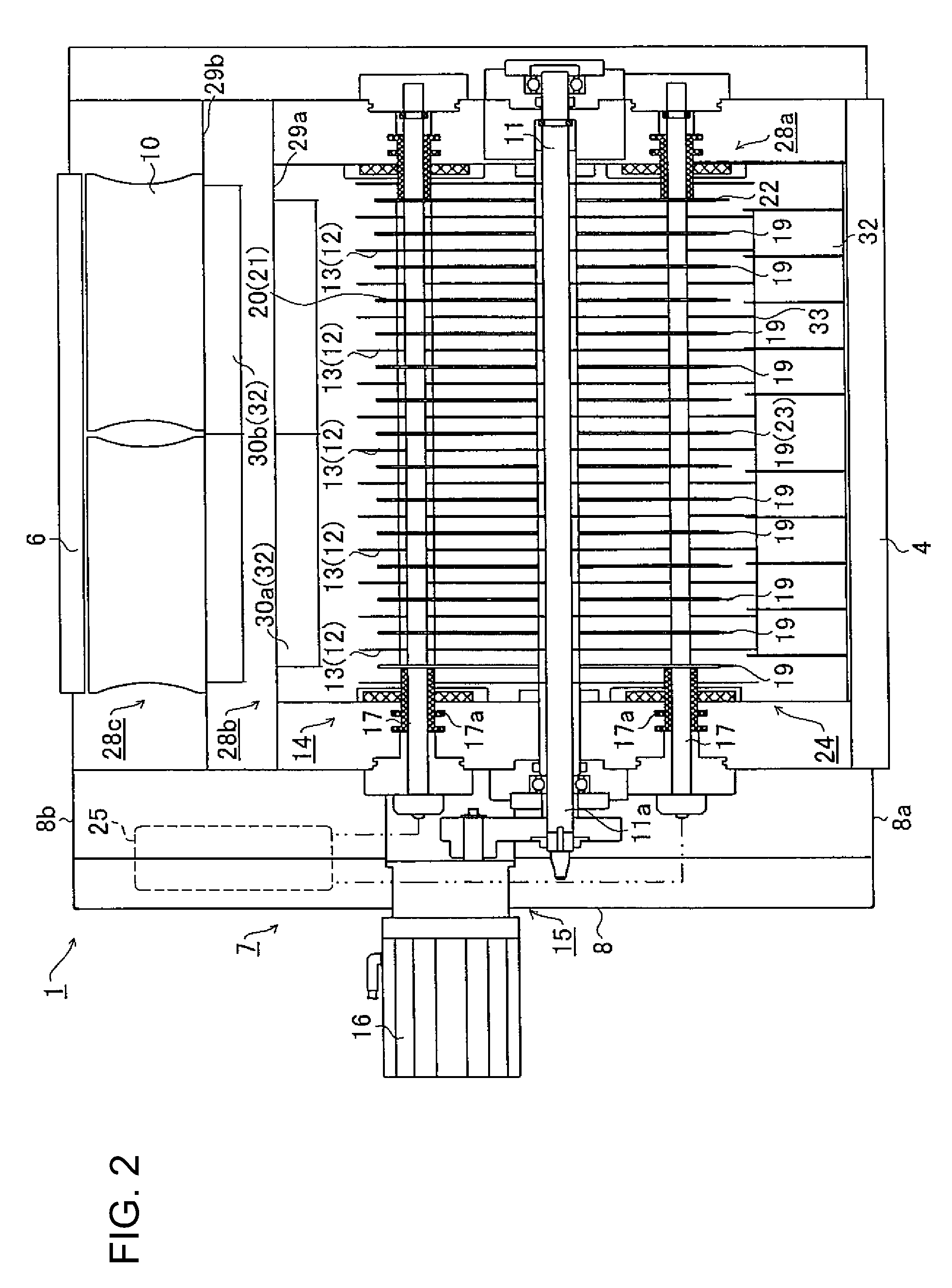Electrostatic precipitator
a precipitator and electrostatic technology, applied in the field of electrostatic precipitators, can solve the problems of increasing the workload of employees, increasing the cost of exchange, and large bulky dry- and wet-type electrostatic precipitators, and achieve the effect of a distance equal to the absorption surfa
- Summary
- Abstract
- Description
- Claims
- Application Information
AI Technical Summary
Benefits of technology
Problems solved by technology
Method used
Image
Examples
Embodiment Construction
Preferred Embodiment of the Invention
[0035]An electrostatic precipitator 1, one embodiment of the present invention, is described below with reference to FIGS. 1 through 4. Here, FIG. 1 is an explanation view showing the internal structure of the electrostatic precipitator of this type that is viewed from the side thereof. FIG. 2 is an explanation view showing the internal structure of electrostatic precipitator 1 that is viewed from the top thereof. FIG. 3 is an explanation view showing the structures of the discharge electrode, charging plates and adsorption plates. FIG. 4. is an explanation view illustrating the movements of charged particles.
[0036]An electrostatic precipitator of this embodiment mainly comprises a housing 8 inside of which an air duct 7 communicates between an inlet 4 sucking a contaminated air 3 that contains fine particles 2 and an outlet 6 discharging clean air 5 that has been cleaned through the electrostatic precipitator 1; an air flow generator 10 that is ...
PUM
 Login to View More
Login to View More Abstract
Description
Claims
Application Information
 Login to View More
Login to View More - R&D
- Intellectual Property
- Life Sciences
- Materials
- Tech Scout
- Unparalleled Data Quality
- Higher Quality Content
- 60% Fewer Hallucinations
Browse by: Latest US Patents, China's latest patents, Technical Efficacy Thesaurus, Application Domain, Technology Topic, Popular Technical Reports.
© 2025 PatSnap. All rights reserved.Legal|Privacy policy|Modern Slavery Act Transparency Statement|Sitemap|About US| Contact US: help@patsnap.com



